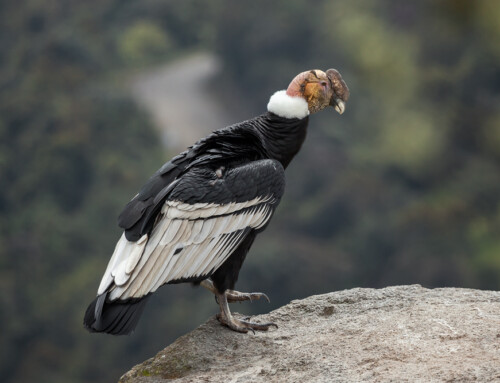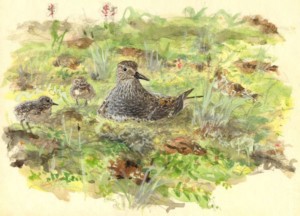 LINKED PAPER
LINKED PAPER
Mismatch‐induced growth reductions in a clade of Arctic‐breeding shorebirds are rarely mitigated by increasing temperatures Lameris, T. K., Tomkovich, P. S., Johnson, J. A., Guy Morrison, R. I., Tulp, I., Lisovski, S., DeCicco, L., Dementyev, M., Gill Jr, R.E., Ten Horn, J. and Piersma, T., Pohlen, Z., Schekkerman, H., Soloviev, M., Syroechkovsky, E.E., Zhemchuzhnikov, M.K. & van Gils, J. A. 2021 Global Change Biology. doi: 10.1111/gcb.16025 VIEW
We know ‘shorebirds’ as the birds you’ll meet on mudflats and beaches, where they chase shrimps or dig up clams from under the sand. Yet in summer, when our beaches are filled with tourists rather than birds, many shorebirds have migrated to the far north, where they make a remarkable switch in lifestyle. Rather than scouring the shores, they can be found nesting hidden on the vegetated tundra, where they feed on insects which appear by the millions as soon as the permafrost soil thaws. These insects are also the main prey for their chicks, which need to start feeding for themselves only hours after hatching from their eggs. In former times, the main danger for these chicks were sudden cold spells and snow blizzards, which could turn up suddenly during the short Arctic summer. However, as human actions have significantly warmed up our planet with especially rapid changes in the northern hemisphere, the cold no longer seems to be the main threat for young shorebird chicks.
Spring in the Arctic, the moment when snow melts and the tundra comes to life, is starting earlier every year, and with that insects also emerge from the tundra soil earlier in the year. Most birds, including shorebirds, have not changed their arrival dates to the breeding grounds in the northern tundra, and when chicks hatch from their eggs, most insects may already have disappeared. When chicks experience a ‘mismatch’ with their prey, it is often suggested that they will grow slower as they cannot find enough food. This is considered as one of the main threats of a warming climate on migratory animals.
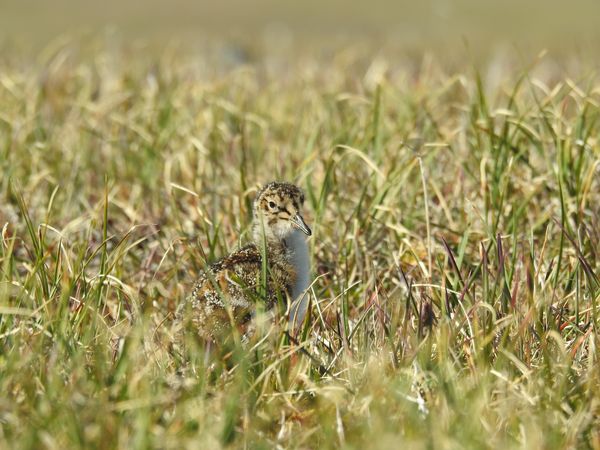
Figure 1 Red Knots ssp. canutus breed in the central-Russian Arctic (Taimyr peninsula), where their chicks profit from large numbers of craneflies © Job ten Horn.
At the same time, climate warming has also resulted in warmer summers in the Arctic. In such a warmer environment and with no cold spells, chicks will need less energy to stay warm, which leaves more energy to grow. Recently it was proposed that this mechanism may counteract the effect of lowered food availability when chicks are mismatched, which means that the effect of climate warming on chick growth may become net zero. As new records in early snowmelt and high temperatures are observed in the Arctic almost every year, I set out to study how these aspects of climate warming impact the growth of Arctic shorebird chicks in Northern Russia, with a special focus on the Red Knot (Calidris canutus).
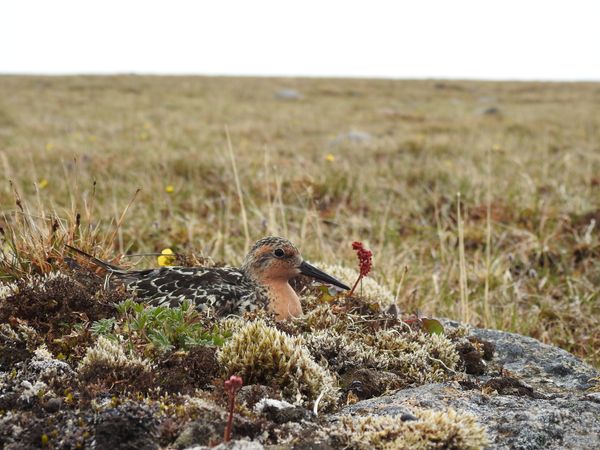
Figure 2 Nests of Red Knots are well hidden on the sparsely-vegetated tundra. One of the most visible Red Knot nests we found was placed upon a stone © Job ten Horn.
Although I had been warned beforehand, it was striking how difficult it was to find Red Knots on their nest. While nesting shorebirds are well-known for being camouflaged during breeding, Red Knots seem to take this to the extreme. To flush them from the nest you need to practically step on them, and as they nest in low densities on the vast tundra landscape, this is unlikely to happen by chance. The best chance of finding a nest is to observe a female laying an egg in a nest scrape, and you can probably imagine how many kilometers and hours you need to spend on the tundra to experience such an event. Yet, we managed to find roughly 20 nests in two summer seasons. By equipping the incubating males with radio transmitters, we were able to repeatedly measure the growing chicks. We also collected information on the availability of insect prey by placing pitfalls, and together with available data on temperature this would enable us to test how food and temperature would impact chick growth.
Video An overview of two field work seasons where we studied breeding Red Knots in the central Russian Arctic.
When presenting our hard-won data on Red Knot chick growth at the International Wader Study Group meeting, I became in touch with Pavel Tomkovich, who had collected similar data on Red Knots, but also Great Knots (Calidris tenuirostris) and Surfbirds (Aphriza virgata). Together with data on Red Knots from sites in Canada and Alaska collected by Guy Morrison and Jim Johnson, we set up a collaborative data set which allowed us to test our hypotheses on similar species across almost the entire Arctic.
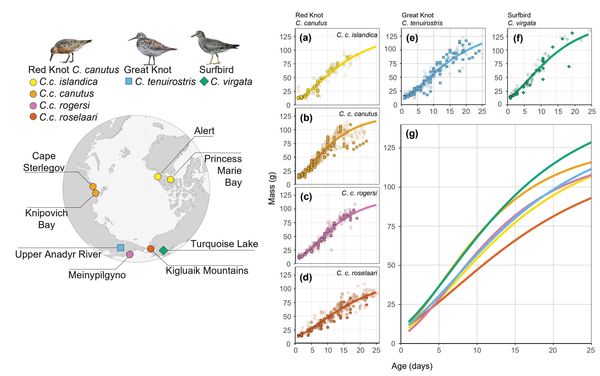
Figure 3 Study site locations and body mass growth rates of Red Knot ssp. islandica (A), canutus (B), rogersi (C) and roselaari (D), Great Knot (E) and Surfbird (F).
We found that availability of insect prey is a key determinant of growth, and in general chicks were growing slower when they hatched after the seasonal ‘food peak’ of insect abundance. As expected, chicks were growing faster when growing up under higher temperatures. At the same time, this effect of temperature on growth was mostly small when compared to the effect of hatching after the food peak. This means that for most species, higher temperatures cannot counteract the effect of lowered food availability when chicks are mismatched. The exception is formed by Red Knots of the subspecies islandica, which breed in high-Arctic Canada where summer temperatures are 2 degrees Celcius on average. In such a cold environment, the seasonal summer temperature apparently plays a more important role for growing chicks than a (slightly) larger mismatch.
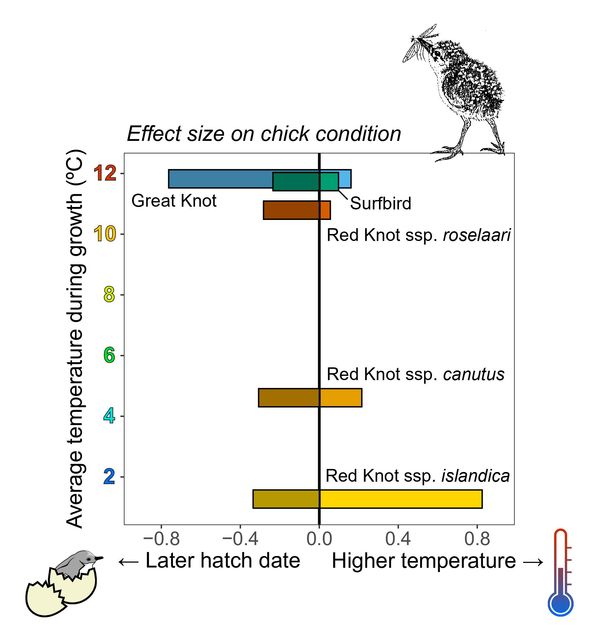
Figure 4 Later hatch dates (relative to the local food peak) leads to reductions in chick growth in five populations of Arctic-breeding shorebirds. Higher temperatures generally lead to faster growth, but this can only compensate for later hatch in Red Knots ssp. islandica which grow up in the coldest conditions.
What does this mean for the fate of shorebirds and their chicks in a warming world? While we have been able to show that Red Knot chicks and related species are sensitive to growth reductions when being mismatched with their insect prey, and that this effect can hardly be counteracted by higher temperatures, we do not find that such mismatches are becoming more prominent in recent years. Although the species in our study have not changed their laying dates over time – which would make them susceptible for a mismatch in a warming climate – we also do not observe any changes in the moment in spring when insects first appear (although our sample size was rather small in this respect). This means that, so far, there still is little evidence for mismatches to have larger impacts on Arctic-breeding shorebirds in a warming climate. At the same time, climate warming in the Arctic is continuing at unprecedented rates, which means that mismatches may become more prominent in the future. With many Arctic-breeding shorebird populations already in decline, this means their troubles are far from over.
References
McKinnon, L., Nol, E. & Juillet, C. 2013. Arctic-nesting birds find physiological relief in the face of trophic constraints. Scientific Reports 3: 1-6. VIEW
Reneerkens, J., Schmidt, N. M., Gilg, O., Hansen, J., Hansen, L. H., Moreau, J. & Piersma, T. 2016. Effects of food abundance and early clutch predation on reproductive timing in a high Arctic shorebird exposed to advancements in arthropod abundance. Ecology and Evolution 6: 7375-7386. VIEW
Saalfeld, S. T., Hill, B. L., Hunter, C. M., Frost, C. J., & Lanctot, R. B. 2021. Warming Arctic summers unlikely to increase productivity of shorebirds through renesting. Scientific Reports 11: 15277. VIEW
Saalfeld, S. T., Mcewen, D. C., Kesler, D. C., Butler, M. G., Cunningham, J. A., Doll, A. C., English, W. B., Gerik, D. E., Grond, K., Herzog, P., Hill, B. L., Lagassé, B. J., & Lanctot, R. B. 2019. Phenological mismatch in Arctic-breeding shorebirds: Impact of snowmelt and unpredictable weather conditions on food availability and chick growth. Ecology and Evolution 9: 6693-6707. VIEW
Image credit
Top right: Great Knots are breeding in Eastern Siberia, in forest-tundra slightly below the Arctic circle. The males take care of the chicks after hatch. Artwork by Maksim Dementyev.
If you want to write about your research in #theBOUblog, then please see here.




